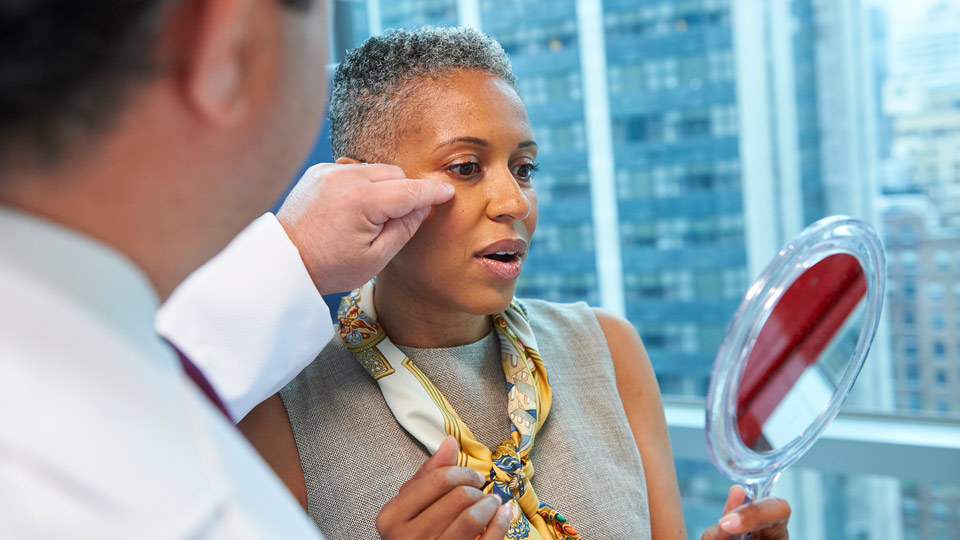The Role of a Skin Doctor in Diagnosing and Dealing With Various Skin Conditions
The role of a skin specialist extends far beyond basic skin treatment; it includes the elaborate processes of identifying and dealing with a wide selection of skin problems. The complexity of skin conditions frequently calls for a multifaceted technique that consists of not just clinical treatments yet additionally patient education and preventative techniques.
Relevance of Skin-related Expertise
The knowledge of dermatologists is critical in the diagnosis and management of skin disorders, as they possess specialized understanding that prolongs past general clinical training. This innovative understanding is necessary for accurately determining a vast array of skin disease, which commonly provide with overlapping signs and symptoms that can confuse non-specialist experts. Skin specialists are educated to differentiate in between various skin conditions, making sure suitable therapy plans are carried out quickly.
Additionally, the field of dermatology includes a distinct combination of clinical skills and cutting-edge modern technology. Dermatologists utilize advanced diagnostic devices, such as dermatoscopes and skin biopsies, to analyze skin sores and identify their nature. This technical efficiency permits very early discovery of potentially severe problems, including skin cancers cells, which can significantly improve individual end results.

Common Skin Problems Identified
Many skin conditions can present with varying degrees of seriousness and intricacy, making dermatological experience essential for exact diagnosis and management. Amongst the most prevalent problems are acne vulgaris, eczema, dermatitis, and psoriasis.
Acne vulgaris, characterized by the visibility of pustules, comedones, and papules, mostly influences adolescents yet can persist right into adulthood. Dermatitis, or atopic dermatitis, is a persistent inflammatory problem that results in dry, itchy, and irritated skin. Psoriasis is an autoimmune disorder that materializes as red, scaly plaques, primarily on extensor surfaces, and can considerably impact the high quality of life.
Other typical disorders consist of rosacea, which offers with face flushing and noticeable capillary, and seborrheic dermatitis, often causing dandruff and oily patches on the scalp. Fungal infections, such as tinea pedis (athlete's foot) and tinea corporis (ringworm), are also frequently come across.
These differed conditions call for an extensive understanding of pathophysiology, as well as knowledge of restorative choices, to lead efficient therapy strategies - Dermatologist Raleigh NC. Via accurate diagnosis, skin doctors can provide customized administration plans that deal with both the signs and underlying reasons for these common skin disorders
Diagnostic Techniques Used
Just how do dermatologists accurately detect numerous skin problems? Skin doctors utilize a combination of scientific examinations, diagnostic tools, and specialized techniques to ensure accurate identification of skin disease. The preliminary action commonly includes a comprehensive case history and health examination. Throughout this procedure, dermatologists evaluate the person's symptoms, start, duration, and any possible triggers.
One of the main analysis methods is dermoscopy, which uses a portable tool to magnify skin sores, allowing for comprehensive examination of structures not visible to the naked eye. Furthermore, this page skin biopsies are frequently performed, in which a small sample of skin is eliminated for histopathological evaluation. This method is very useful for identifying conditions such as cancer malignancy and various other skin cancers.
Spot screening is one more essential method utilized to recognize contact dermatitis by subjecting percentages of possible irritants to the skin. Research laboratory tests, consisting of blood examinations and cultures, may be conducted to rule out systemic concerns or infections. Jointly, these diagnostic strategies enable skin specialists to develop a detailed understanding of skin disorders, causing precise diagnoses and notified individual monitoring.

Treatment Choices Readily Available
A broad variety of therapy options is available for handling skin problems, customized to the specific condition and private person demands. Dermatologists utilize both systemic and topical treatments, depending upon the severity and sort of skin condition. Topical therapies, such as corticosteroids, retinoids, and calcineurin inhibitors, are typically recommended for conditions like dermatitis, psoriasis, and acne. These agents target inflammation and advertise skin recovery.
For a lot more serious problems, systemic treatments might be essential. These consist of dental medicines such as antibiotics for microbial infections and immunosuppressants for autoimmune disorders. Biologics, a more recent class of drugs, have actually shown effectiveness in dealing with chronic inflammatory problems like psoriasis and atopic dermatitis.
Along with pharmacologic treatments, dermatologists may suggest step-by-step choices such as laser photo-therapy, chemical, or treatment peels (Dermatologist Raleigh NC). These procedures can deal with pigmentation concerns, acne scarring, and other skin abnormalities effectively
In have a peek here addition, way of life alterations, including correct skin care regimens and sun protection, play a crucial function in the total monitoring of skin problems. By incorporating these treatment modalities, skin specialists intend to boost patient outcomes and boost lifestyle for those affected by skin disease.
Client Education And Learning and Assistance
Empowerment through expertise is important in the monitoring of skin disorders, as patient education and support considerably influence therapy outcomes. Skin specialists play an essential function in supplying individuals with comprehensive info regarding their conditions, treatment options, and self-care approaches. Effective interaction cultivates a collaborative atmosphere where patients can actively get involved in their own treatment.

Assistance expands past education click for more and learning; it includes psychological peace of mind and continuous motivation. Skin doctors must produce a secure area for people to express their worries and ask questions. Resources such as informative handouts, sites, and support system can further equip patients, enabling them to attach with others encountering comparable challenges.
Eventually, an educated patient is more probable to take part in their treatment trip, bring about better adherence, satisfaction, and boosted health and wellness end results. The skin doctor's function in patient education and learning and assistance is fundamental to enhancing the monitoring of skin conditions.
Final Thought
Finally, skin doctors play a vital role in the efficient diagnosis and therapy of a variety of skin disorders. Their specific know-how, incorporated with advanced analysis methods and customized treatment plans, makes certain thorough look after patients. In addition, the emphasis on patient education fosters proactive monitoring of skin health, encouraging people to take educated actions concerning their skin care programs. The payments of skin doctors significantly enhance the quality of life for those affected by skin disease.
The function of a dermatologist prolongs much beyond basic skin treatment; it incorporates the intricate processes of identifying and dealing with a wide range of skin conditions. Skin doctors make use of advanced diagnostic tools, such as dermatoscopes and skin biopsies, to examine skin sores and establish their nature. Ultimately, the specialized training and experience of dermatologists are essential in supplying thorough care for patients with skin disorders.
Furthermore, skin biopsies are often done, in which a tiny example of skin is gotten rid of for histopathological evaluation. Jointly, these diagnostic strategies permit skin doctors to create a thorough understanding of skin problems, leading to exact medical diagnoses and educated person monitoring.